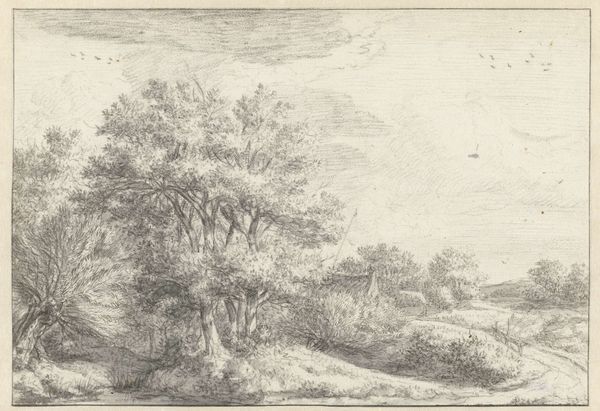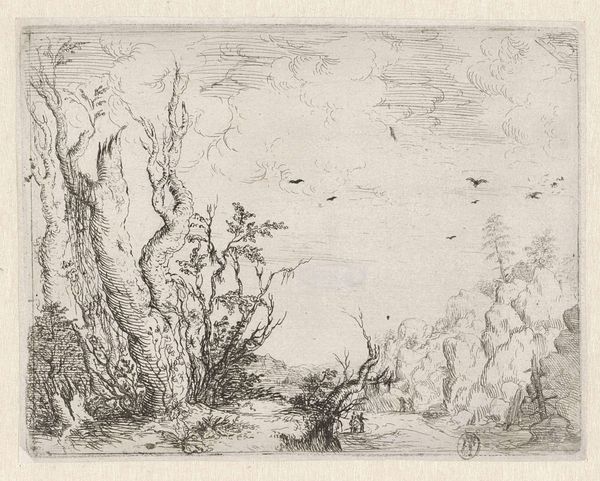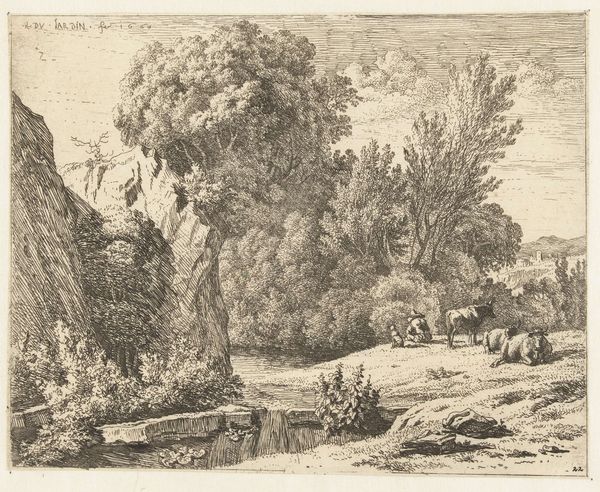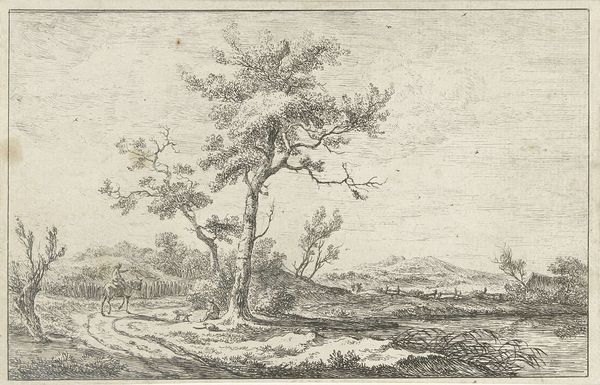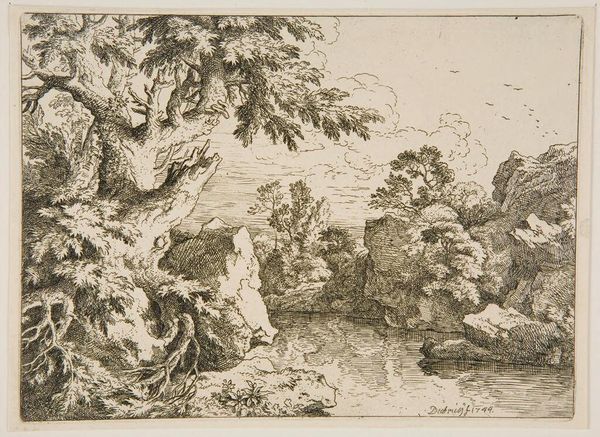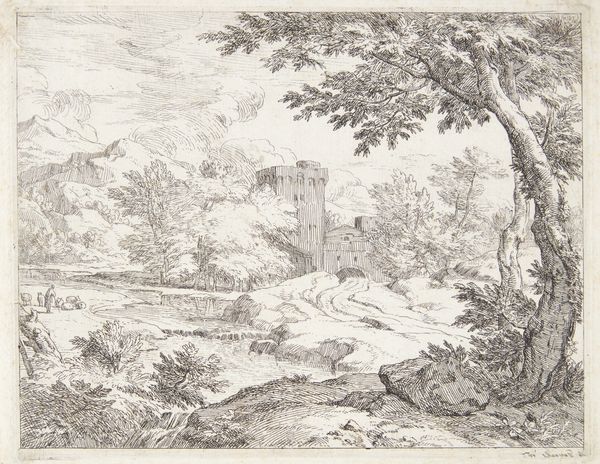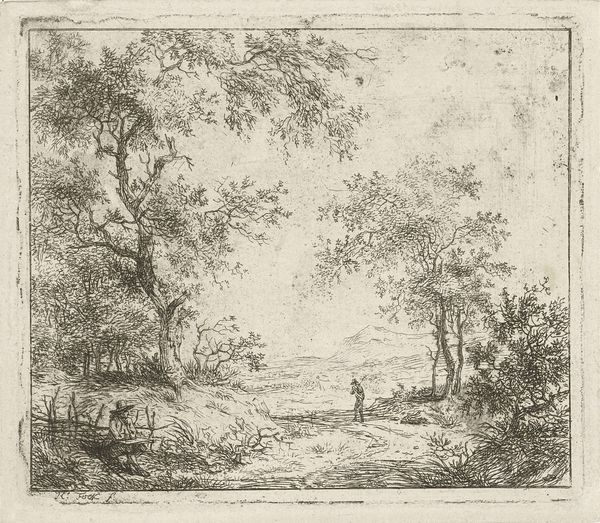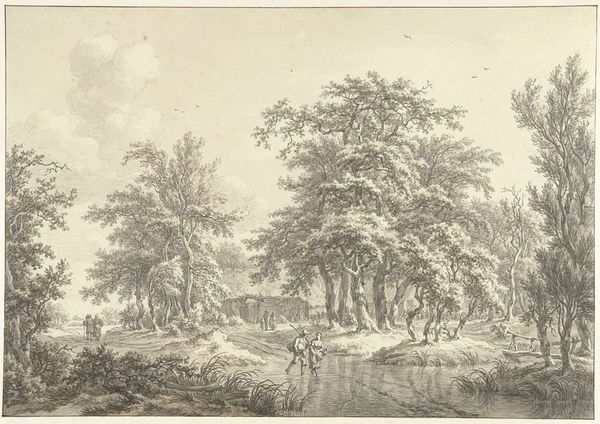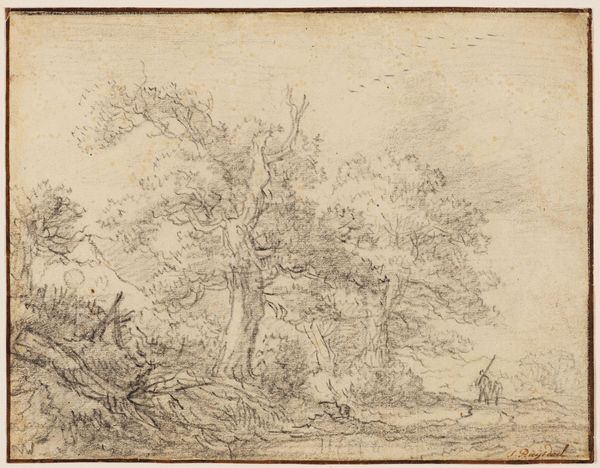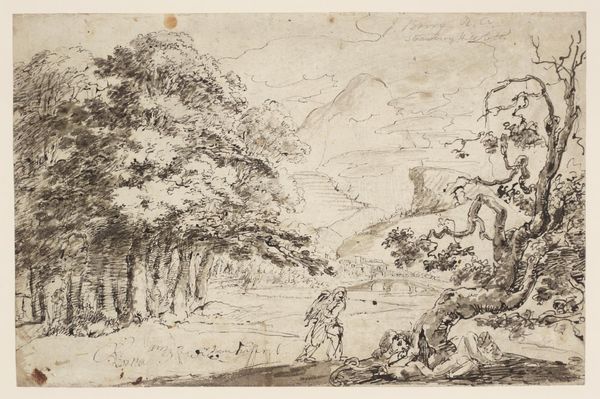
Dimensions: height 65 mm, width 100 mm
Copyright: Rijks Museum: Open Domain
"Landschap met twee ezehoeders" ("Landscape with Two Donkey Herders") is an etching made by Jan van Ossenbeeck in the 17th century. During this period, the Dutch Golden Age, the Netherlands experienced significant economic prosperity and artistic innovation. It was also a time of stark social hierarchies and colonial expansion. This landscape, with its rustic figures, speaks to broader questions of labor and representation. Who are these anonymous figures, and what does it mean to depict them within a landscape? The donkeys they lead, burdened with goods, tell a story of work, while the landscape itself, though seemingly natural, carries the weight of human activity and economic exploitation. Rather than romanticizing rural life, this etching hints at the everyday realities of those whose labor supported the burgeoning Dutch economy. It’s a small scene, yet it opens up a much larger dialogue about the relationship between people, land, and power.
Comments
No comments
Be the first to comment and join the conversation on the ultimate creative platform.
